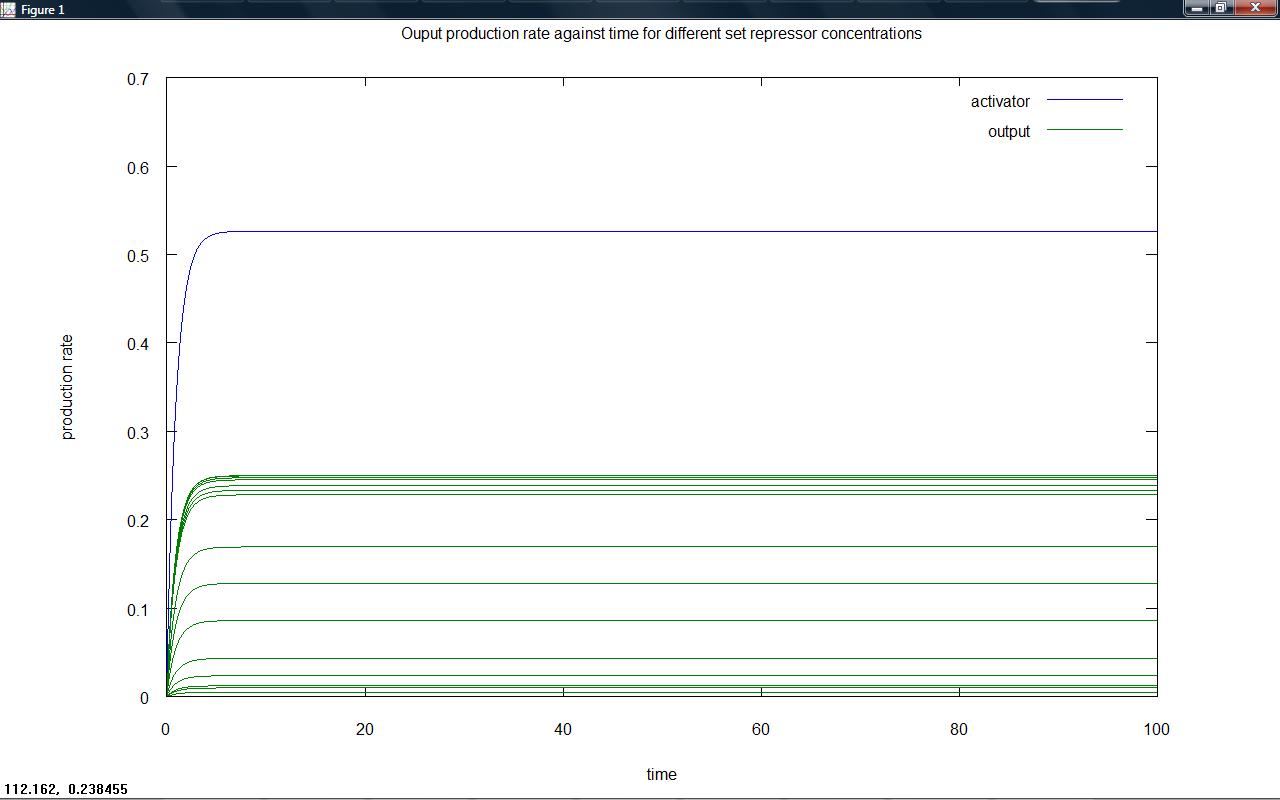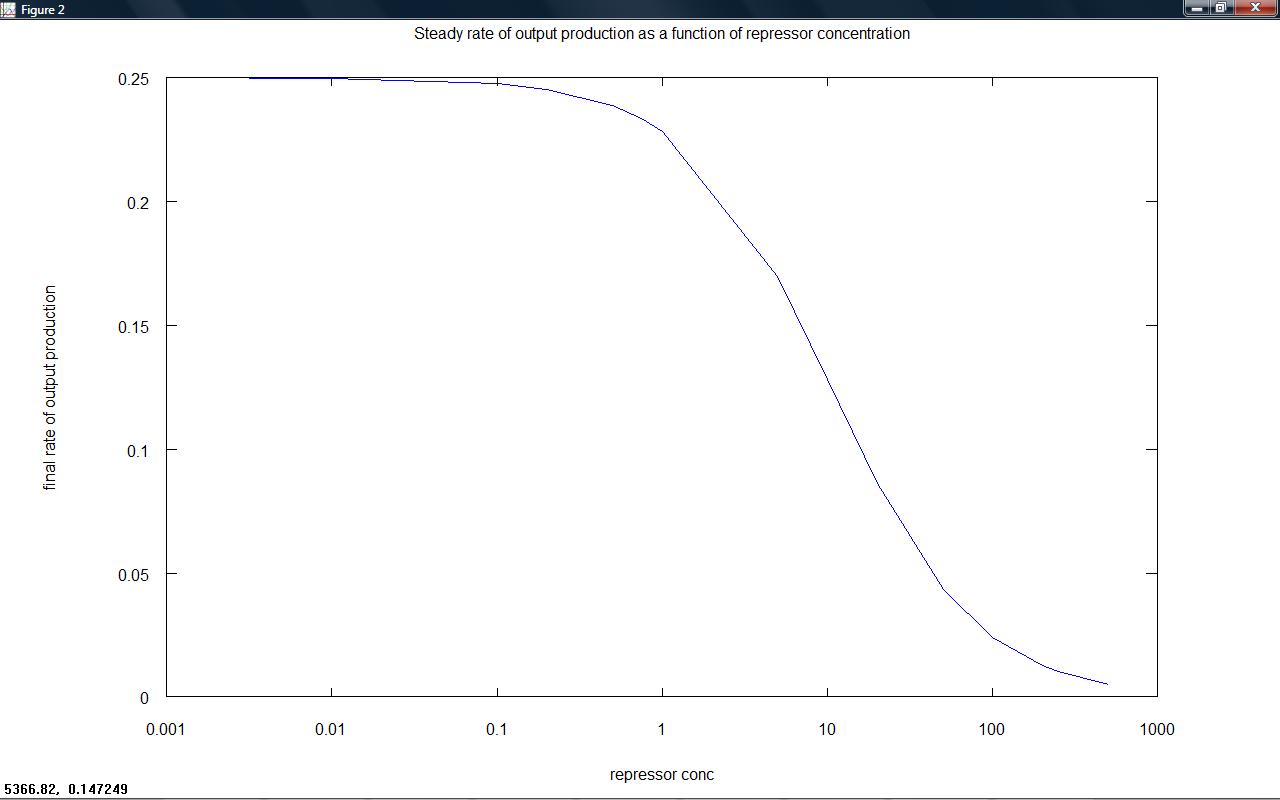Team:Cambridge/Notebook/Week6
From 2009.igem.org
(→Modelling) |
(→Modelling) |
||
| Line 18: | Line 18: | ||
The most important thing in determining 'switching level' (as we have thus far called it) would seem to be the value of the binding constants. The aim of this thresholding system was to have one repressor expressed at differnt levels but preliminary investigation indicates this may not be the best way forward. | The most important thing in determining 'switching level' (as we have thus far called it) would seem to be the value of the binding constants. The aim of this thresholding system was to have one repressor expressed at differnt levels but preliminary investigation indicates this may not be the best way forward. | ||
| - | The next aim for this modelling work is to incorporate the data from the plate reader that is beginning to arrive and to move away from solely using differential equations. | + | The next aim for this modelling work is to incorporate the data from the plate reader that is beginning to arrive and to move away from solely using differential equations. Preliminary data shows that amplifiers that cause large increases in output after a switching level then tend to have a fall in output. An explanation is that the cell has only a limited amount of polymerase and ribosomes; these are 'used up' when large amounts of product are being made and then there cannot be any more made until the transcriptional machinery is released from its 'duties'. The cell also needs to use the transcriptional machinery for survival purposes, so these stimuli may become more important to the cell for a particular time, leading to a fall in output production rate. A number of explanations are possible, but all can be seen as a form of negative autoregulation which leads often to oscillation about a steady state level []. |
<!--Do not remove the first and last lines in this page!-->{{Template:CambridgeBottom}} | <!--Do not remove the first and last lines in this page!-->{{Template:CambridgeBottom}} | ||
Revision as of 13:13, 17 August 2009
Categories :
Project :
-
Overview
Sensitivity Tuner
--- Characterisation
--- Modelling
Colour Generators
--- Carotenoids (Orange/Red)
--- Melanin (Brown)
--- Violacein (Purple/Green)
The Future
Safety
Notebook :
Team Logistics :
Week 6
Monday
Dry Work
Modelling
On friday, the two models for a proposed threshold switching system were created. Model 6.2 (competition between activator and repressor for a site on the DNA) was investigated; For different 'arabinose' (or other proposed input) and repressor concentrations the level of output from the system was plotted. It was hoped that for different input levels (shown in the below graphs by the different green lines of output) the position of switching to low output would take place at different repressor levels due to the competitive nature of the system. Investigation into refining the model will take place.
As can be seen, different arabinose concentrations mean lower output levels, but all switch off at similar levels of repressor, so if the model is assumed to be correct, a system such as this would not meet the specifications of switching on at different levels of input. It is actually more useful to plot against input concentration with different set repressor concentrations represented by the different lines, as below, as each line then represents the response of a particular strain to input.
The most important thing in determining 'switching level' (as we have thus far called it) would seem to be the value of the binding constants. The aim of this thresholding system was to have one repressor expressed at differnt levels but preliminary investigation indicates this may not be the best way forward.
The next aim for this modelling work is to incorporate the data from the plate reader that is beginning to arrive and to move away from solely using differential equations. Preliminary data shows that amplifiers that cause large increases in output after a switching level then tend to have a fall in output. An explanation is that the cell has only a limited amount of polymerase and ribosomes; these are 'used up' when large amounts of product are being made and then there cannot be any more made until the transcriptional machinery is released from its 'duties'. The cell also needs to use the transcriptional machinery for survival purposes, so these stimuli may become more important to the cell for a particular time, leading to a fall in output production rate. A number of explanations are possible, but all can be seen as a form of negative autoregulation which leads often to oscillation about a steady state level [].
 "
"

